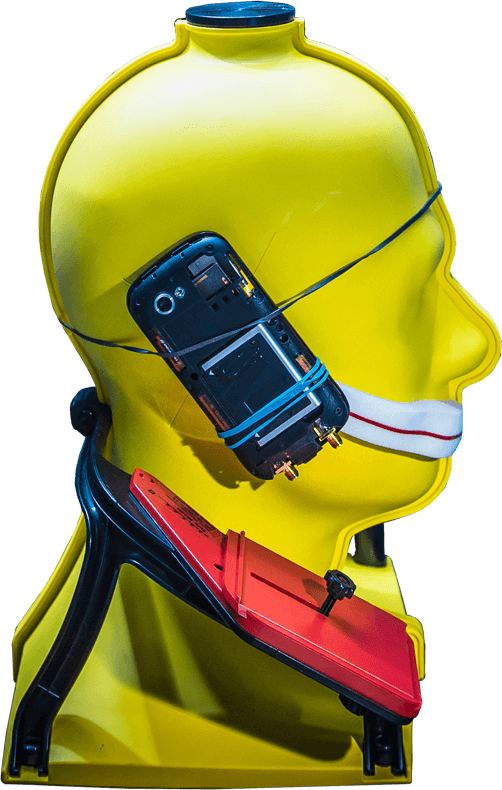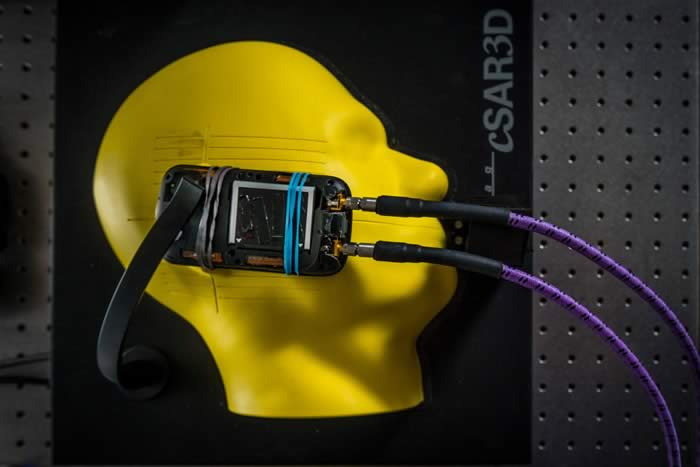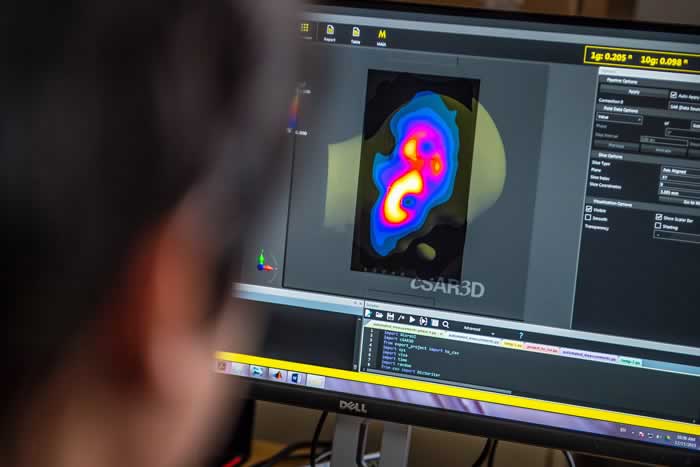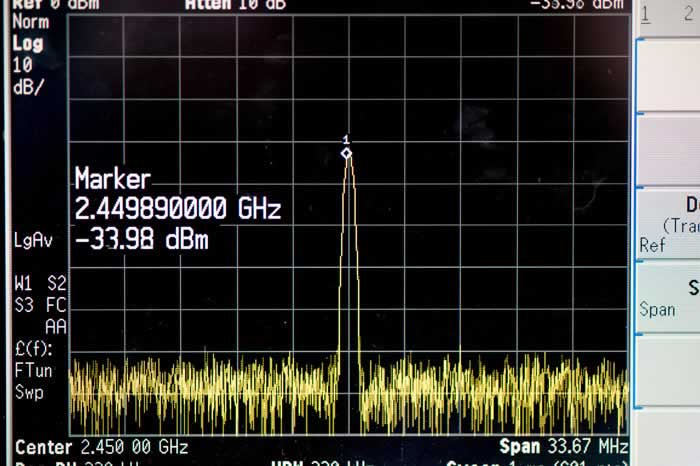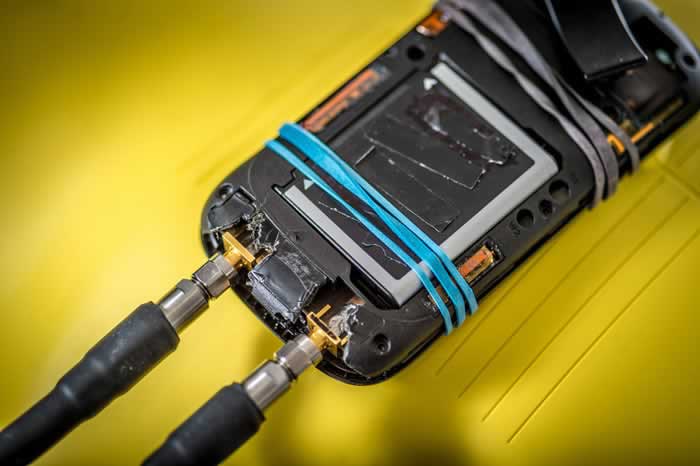Electrical engineers: professors Patrick Fay (left) and Bert Hochwald (center), graduate student Arash Ebadi Shahrivar.
Radiation Limits
Every time we use a cell phone, our bodies absorb some electromagnetic radiation. Each phone must comply with the Federal Communications Commission’s limits on the specific absorption rate (SAR) of radiation that is considered safe for the body.
“Everybody complains about their phone not performing the way they want,” Hochwald said. “The batteries, size, features, and processing power of phones all improve daily, but we still have to deal with SAR limits. So we have to be creative in how the phone’s technology can work within these limits.”
Performance problems with cell phones – indicated by a spinning circle and slow download or transition times – are often caused by the uplink, or how much information a phone can transmit to a base station. A base station can be placed high on a hill and transmit with massive power without serious health concerns. But a phone is held either in hand or next to the head, which means that the requests being transmitted to the base station run into SAR limits.
“There’s a constant tension between improving performance and limiting SAR,” Hochwald said. “We want to hear better, upload faster and have more power, but these actions produce more SAR, so we have to manage that tension.”

A Safer Solution
His project, funded by the National Science Foundation, is testing the idea of replacing the single transmitter used in today’s cell phones with multiple transmitters at different points within the device.
Cell phone design generally uses a single transmitter, he said, which creates a ‘hot spot’ of radiation where the antenna and amplifier are located. By using multiple transmitters, the project aims to disperse the radiation and reduce SAR. The multiple transmitters must be used properly to both improve performance as a wireless communication device and to simultaneously reduce SAR. Early results for this new hardware structure show great promise, Hochwald said.
Besides the half-head, a second testing method involves a full-head mannequin in Notre Dame’s anechoic chamber, which seals out exterior signals and completely absorbs reflections of electromagnetic waves. The chamber is used to test the long-range performance of the newly constructed, multi-transmitter phones.
A full-head mannequin testing wireless performance in Notre Dame’s anechoic chamber.
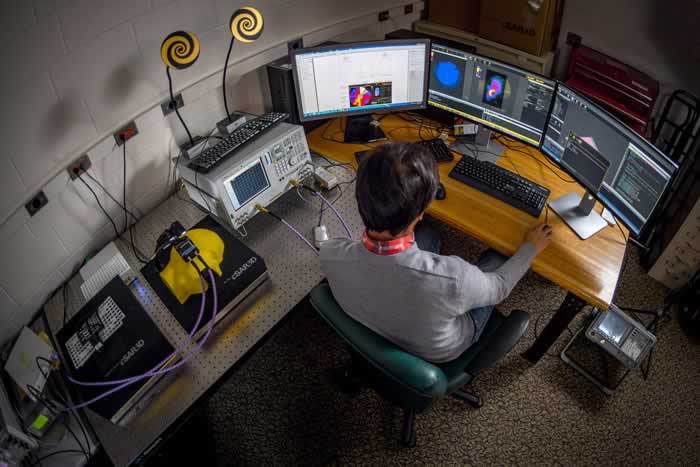
Crowded Spaces
Hochwald already has more than three dozen electrical engineering patents and has applied for several more in relation to the multiple transmitter method. He was one of three Notre Dame professors Thomson Reuters named to its 2014 list of The World’s Most Influential Scientific Minds, which included 3,200 scientists around the world whose published articles are the most cited by other researchers. His electrical engineering colleagues on this project are Notre Dame’s Patrick Fay, Purdue University’s David Love, and University of Illinois’ Jianming Jin.
The Notre Dame Wireless Institute focuses on crowds. This focus includes crowded venues, such as stadiums where wireless systems get overwhelmed; crowded spectrum, which is the set frequencies at which radio signals travel that must be effectively shared by cellular, WiFi, broadcasting, and government use; and crowded devices, which is what Hochwald’s team is working on.
Looking Ahead
“The trend in wireless is that mobile data is exploding,” said J. Nicholas Laneman, director of the Wireless Institute. “The devices are getting smaller and you’re trying to get more from them. Bert’s work is trying to crowd more electronics into a phone.”
While the current generation of phones comply with SAR limits, Hochwald said newer phones with more features are constantly pushing toward the edge. Some manufacturers have already had to artificially lower phone performance to meet SAR requirements. And the next generations of phones, including eventually 5G phones at higher frequencies, will absolutely have to find creative ways to limit human exposure to electromagnetic radiation to reach their full potential.
“The hope is that we understand how to incorporate multiple high-performance transmitters and also help reduce human exposure to electromagnetic radiation,” he said. “If we can achieve both, it’s a win-win.”
